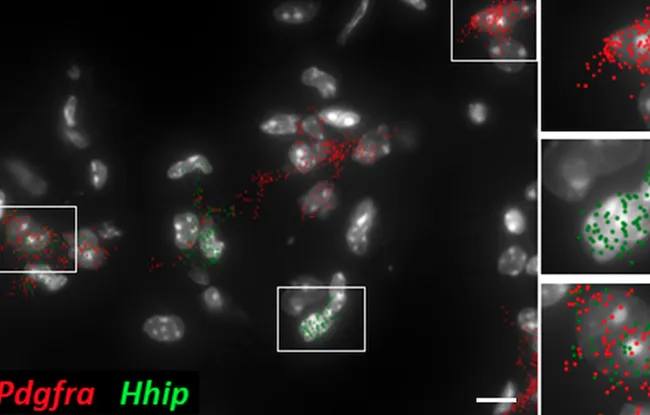- Home >
- Institut Curie News >
- Improved understanding of the molecular mechanisms of the side effects caused by radiotherapy
Five to 20% of patients treated with radiotherapy for lung or breast tumors - i.e. 500 to 2,000 patients each year in France - develop toxicity which can arise during treatment or months or up to two years afterwards. These long-term side effects are the most serious and can lead to fibroses which are likely to stiffen the lung and cause debilitating respiratory problems, which can sometimes be fatal. It all depends on the dose, the irradiation volume and the sensitivity of the patient. This risk of complication restricts treatment of tumors. Without this limitation we could destroy more cancer cells.
The unique combination of “single-cell” and spatial approaches with irradiation
The Repair, radiation and innovative anti-cancer therapies team (CNRS UMR3347/Inserm U1021) at Institut Curie, led by Dr. José-Arturo Londoño Vallejo, tackled the subject, adopting a unique approach of combining “single-cell” and spatial analyses.
Single-cell sequencing has revolutionized molecular analysis over the past five years. It had never been used in the context of radiotherapy, and involves sequencing the RNA of the cell isolated from a tissue suspension (in this case the lung). In this way we can see the changes caused by irradiation on each cell population. The proportion of epithelial cells decreases and some of them lose their differentiation to transform into mesenchymal cells.
explains Dr. Charles Fouillade, who led the study
Spatial analysis involves observing sections of lung to view the reorganization of the lung tissue after radiotherapy.
Two doses of irradiation to identify the alterations responsible for long-term effects
The study was carried out by testing two doses of irradiation.
The first is low intensity and is likely to cause pneumonia during treatment, which is easily treated. The second leads to pneumonia which is irreversible and progresses to fatal pulmonary fibrosis.
explains Charles Fouillade
A comparison of the two trials helped determine the molecular alterations responsible for the long-term effect.
The team also developed a Web interface to provide access to a set of data from the study to a wide audience, with no need for knowledge in bio-informatics. This atlas explores the early and late responses of the lung to radiation in five main cell populations: epithelial, endothelial, mesenchymal, lymphoid and myeloid.
This knowledge-sharing is essential for us and helps science to progress faster with the benefit of everyone’s efforts
Concludes Charles Fouilade
Research News
Discover all our news
Celebration
The Immunity and Cancer research unit (U932) celebrates its twentieth anniversary
12/12/2025
Artificial Intelligence
08/12/2025


